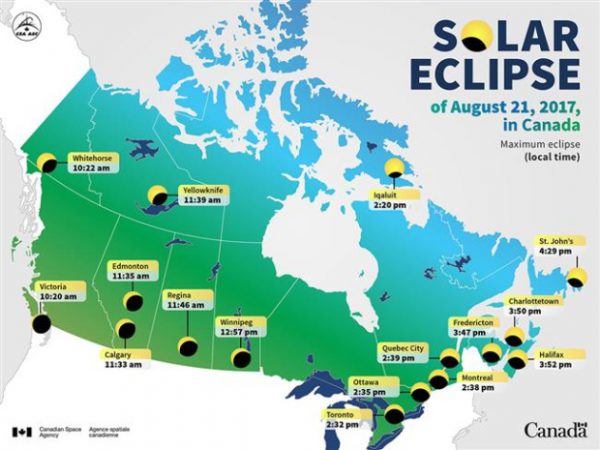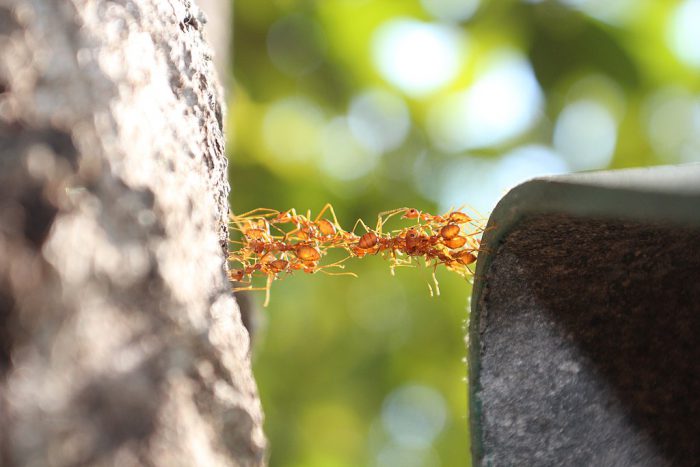It's coming. The solar eclipse.
This is the moment when the Moon gets in between the Earth and the Sun, blocking it partially from our view.
Embed from Getty Images
It is a rare and spectacular event and on Monday, August 21, North America is getting its chance to see one. Even more thrilling? For a few lucky places across the United States, a total solar eclipse will occur. This is when the Moon completely blocks the Sun.
As long as you take the proper, very important precautions (we'll get to those, promise), viewing either a partial or total eclipse will be an event you'll always remember.
Hidden, but revealed
The activity of the Sun's atmosphere is not something we can normally see on Earth. (Getty Embed)
The most interesting thing about an eclipse is not what it hides, but what it shows. The Sun is surrounded by a massive atmosphere called the corona. Corona means "crown" in Latin, and that is kind of what it is — a halo of super-hot gas that extends millions of kilometres into space from the Sun's "head" or surface.
However, despite the corona's huge size (it's much wider than the Sun itself), we can't ever see it. That's because the Sun is far brighter than the corona. So, like trying to see the details of a room as a flashlight is being shone directly into your eyes, the corona is impossible to see.
Except during an eclipse.
Embed from Getty Images
This amazing image of a total solar eclipse over Hawaii in 1999 shows the complex activity above the surface of the Sun in its corona. (Getty Embed)
As the Moon "turns off" the Sun, the ghostly brilliance of the corona is revealed. Flares can be seen bursting upward, and the crown of hot gas surrounds the star. Wow!
A narrow strip stretching from coast-to-coast in the U.S. will see this extraordinary phenomenon (we have maps below). But even outside of this area, it will be a sight to see. Which brings us to...
Repeat after us: Never look without protection!
"Safety glasses, people!" (Getty Embed)
No matter what time of year, you should never look directly at the Sun. But during an eclipse, this danger is dramatically increased. The Moon may block the light, making it feel as dark as the beginning of the evening in some places. But it's not blocking the Sun's dangerous UV radiation. And as your pupils open wider to adjust to the lowering light, that radiation can hit your naked retina with full force and cause permanent eye damage. Ouch!
So, okay. Don't mess with the eclipse. Got it. But you got me all excited to see this thing! What do I do?
No sweat. There are lots of ways to view this event. Protective glasses, filters, even a pair of paper plates! Watch this video, pick your method of choice, and get ready for the show!
When and where to view it
In Canada...

(Canadian Space Agency)
In the United States...
 This will be the first time a total solar eclipse has been viewable in a path across the United States in almost 100 years. (© Kevin Carden | Dreamstime)
This will be the first time a total solar eclipse has been viewable in a path across the United States in almost 100 years. (© Kevin Carden | Dreamstime)



Will taking a picture of the eclipse with a phone/camera ruin it?
Will it hurt your eyes to look at the eclipse for 1 second?
Hi Natalie and Ariella,
The answers to your questions are:
Ariella: DO NOT try to take a picture with a camera. a) It can ruin the camera, b) the picture won’t be very good, and c) to set up the shot, you’ll almost certainly end up looking at the eclipse yourself…which is a major no-no.
Natalie: Yes, even looking at the eclipse for one second will harm your eyes.
Please watch the attached video in the post for more on this. Stay safe, ask an adult if you need more assistance, and enjoy the eclipse!